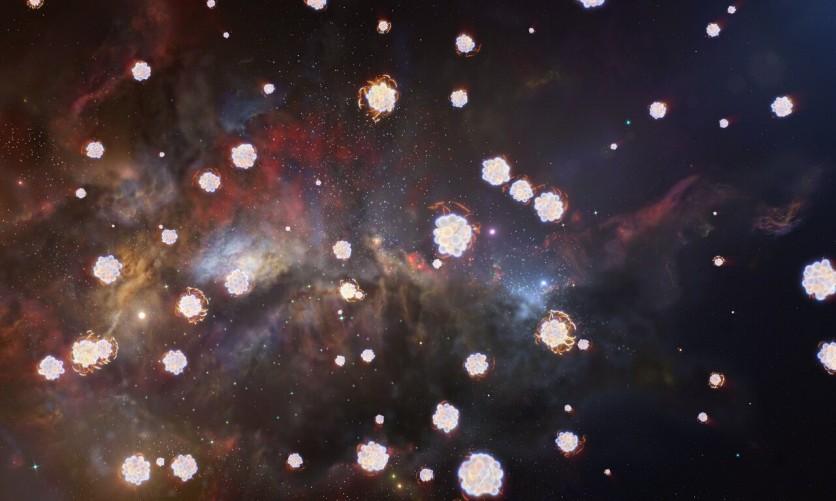A new discovery has been made using the Very Large Telescope (VLT) in Chile, and it's a big one!
For the first time ever, astronomers have found the telltale fingerprints of the explosion of the universe's first stars in three distant gas clouds.

Chemical Fingerprints
The recent discovery of chemical traces in very distant gas clouds is considered a major breakthrough towards comprehending the first stars that formed after the Big Bang.
Andrea Saccardi, who led this study, stated that the team was able to identify the chemical fingerprints of the explosions of the universe's first stars, marking the first time such traces have been found.
According to researchers, the first stars that emerged in the universe were unlike the ones we observe today. These early stars, composed of only the simplest chemical elements, hydrogen and helium, were believed to be much more massive than our Sun, tens or hundreds of times bigger.
These early stars exploded in powerful supernovae, scattering heavier elements into the surrounding gas. The next generations of stars formed out of this enriched gas, and the cycle of birth and death continued, ejecting heavier elements as they perished.
Stefania Salvadori, a co-author of the study and Associate Professor at the University of Florence, explains that it is possible to study the primordial stars indirectly by detecting the chemical elements they scattered into their environment after their demise.
The team used data obtained from ESO's VLT in Chile to identify three gas clouds that existed during the early stages of the universe, when it was only 10-15% of its current age. These gas clouds have a unique chemical fingerprint that corresponds to the explosions of the first stars, which were primarily composed of hydrogen and helium.
The team looked for distant gas clouds that were poor in iron but rich in other elements like carbon, oxygen, and magnesium, which are present in the outer layers of stars.
This type of chemical composition has been previously observed in old stars in the Milky Way, believed to be second-generation stars that formed from the remains of the first stars.
Read also: Starry Pair: NASA's Hubble Captures Stunning Portrait of Spiral Galaxies Resembling Milky Way
Filling the Gaps
The identification of these gas clouds in the early universe fills a gap in our understanding of the characteristics of the first stars. This significant finding supplements the examination of stars in our galaxy and offers a fresh approach to studying the initial stars indirectly.
To study the gas clouds, the researchers used quasars as sources of light. These incredibly bright objects are powered by supermassive black holes at the centers of galaxies, and the light they emit travels across the universe and interacts with gas clouds, imprinting them with various chemical elements.
By analyzing data from several quasars, the team used the X-shooter instrument on the VLT to split the light into various wavelengths, enabling the identification of different elements within the distant clouds.
Moreover, this discovery paves the way for future research with next-generation telescopes and instruments, such as ESO's upcoming Extremely Large Telescope (ELT) and its advanced ArmazoNes high Dispersion Echelle Spectrograph (ANDES).
By using ANDES at the ELT, researchers can investigate rare gas clouds in greater detail, ultimately leading to a better understanding of the enigmatic first stars.
Related Article : Astronomers Find Strange Object Being Dragged Into Milky Way's Supermassive Black Hole

ⓒ 2025 TECHTIMES.com All rights reserved. Do not reproduce without permission.




